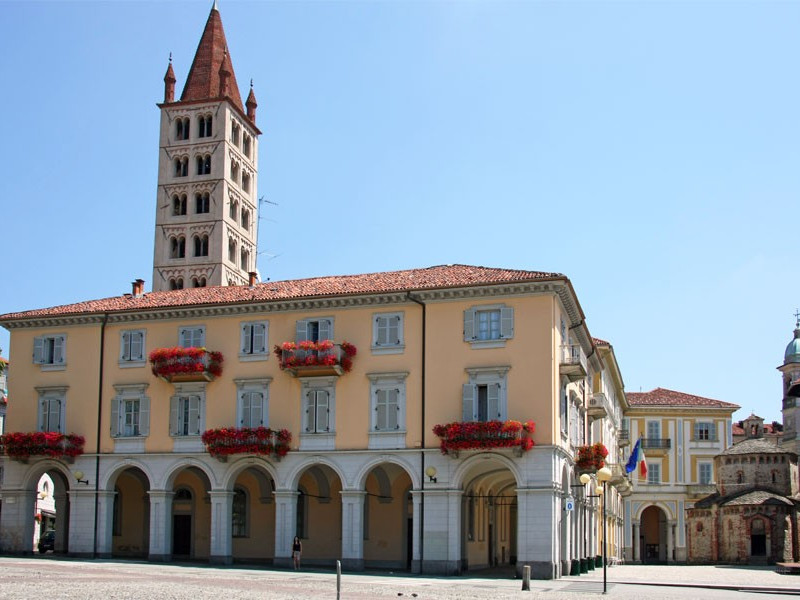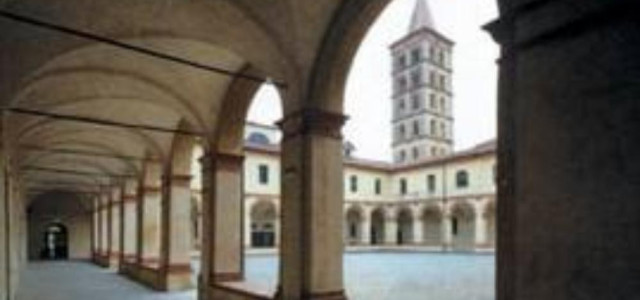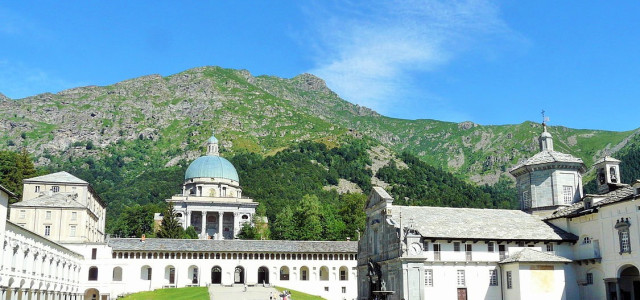Destinazioni - Comune
Biella
Where
Biella
Biella listen is a town and comune in the northern Italian region of Piedmont, the capital of the province of the same name, with a population of 43,733 as of 2012. It is located about 80 kilometres (50 miles) northeast of Turin and about 80 kilometres (50 miles) west-northwest of Milan.
It lies in the foothills of the Alps, in the Bo mountain range near Mt. Mucrone and Camino, an area rich in springs and lakes, the heart of the Biellese Alps irrigated by several mountain streams: the Elvo to the west of the town, the Oropa and the Cervo to the east. Nearby natural and notable tourist attractions include the Zegna Viewpoint, the Bielmonte Ski Resort, Burcina Natural Reserve, and the moors to the south of town. The Sanctuary of Oropa is a site of religious pilgrimages. In 2003, the Sacred Mountain of Oropa was inserted by UNESCO in the World Heritage List.
Biella is an important wool processing and textile centre. There is a small airport in the nearby comune of Cerrione.
History
Origins
The first inhabitants of the area were Ligurians and Celts. This has been ascertained from archaeological finds: they lived near streams and lakes, at first as fishermen and hunters, and later, herders.
A Ligurian people, the Victimuli, fanned out in the plain of Biella (the Bessa) and exploited gold veins near the Elvo, an activity which continued through the early Middle Ages, and even today panning for gold continues as a local hobby.
In the late 1950s, Bronze Age — or, according to some, Iron Age — tools and necklaces, attesting to Biella's antiquity, were found in the Burcina Reserve.
Middle Ages
The city's name appears for the first time as Bugella in a document of 826 recording to the donation of Bugella to Count Busone by Louis the Pious, son of Charlemagne), Holy Roman Emperor; a further document of 882 records some land transactions of Charles the Fat in favor of the church of Vercelli.
In the 10th century the town was inhabited by Alemanni, Lombards and Franks, who built the first walls as a defense against barbarian invasions. Extant remains from this period include the Lombard Romanesque Baptistry and the adjacent church of S. Stefano, around which the town grew: it is today's cathedral, although the original 5th-century building was demolished in 1872.
On April 12, 1160, Uguccione, bishop of Vercelli, granted important trade privileges to anyone residing on Piazzo hill, as an incentive to the estt of a place of refuge against the warfare between the Guelphs and Ghibellines of Vercelli: this was the birth of the Borgo del Piazzo, site of the handsome public square, the Piazza Cisterna, and a Palace fronting on it, the doors of which have stone capitals and terracotta ornaments.
Bishop Uguccione's castle was destroyed in a revolt in 1377 that led to the subjection of Biella, along with its dependent comuni, to the yoke of the house of Savoy.
Modern times
In the 14th and 15th centuries the Visconti family competed with Savoy for the possession of the Biella region. The 17th century saw a similar competition between French and Spanish forces, and Biella was actually occupied in 1704; in 1706 Pietro Micca, a Biellese soldier, saved nearby Turin from a siege that would have meant the invasion of Biella by the French as well — but paid for it with his own life.
In 1798 Biella was once again occupied by the French, and after the battle of Marengo, Biella was formally annexed by France. The Congress of Vienna returned it to Savoy.
In 1859 Biella was besieged by the Austrians but Garibaldi forced an end to the siege, and the town became part of the province of Novara, losing its status as regional capital that it had received in the 17th century from Charles Emmanuel I of Savoy; it was transferred to the province of Vercelli in 1927.
In World War II Biella was the scene of armed resistance.
In 1992, the new province of Biella was formed, separating the territory from the north-western sector of the province of Vercelli.
Wool in the life of Biella
In 1245 the statutes of Biella were already referring to the woolworkers' and weavers' guilds: hardly surprising in view of the region's high mountain pastures and copious water supply needed for washing fleece and powering mills. In the 17th and 18th centuries, as elsewhere in Italy, silk was an important industry, and a silk manufacture was built in town in 1695: in 1835, however, the town's textile history came round full circle when the same building was put to use as a wool factory with the introduction of mechanical looms, putting Biella at the forefront of modern improvements in the industry. Since 1999/2000, a progressively worse crisis in the sector forced many local wool mills to close, since they couldn't compete with the prices of imported fabrics and clothing.
Main sights
Biella Baptistery in romanesque style (10th-11th century), annexed to the Cathedral, housing 13th-century frescoes
Giardino Botanico di Oropa, a botanical garden
Sacro Monte and sanctuary of Oropa
Biella Synagogue
Renaissance church of San Sebastiano (1504)
Oasi Zegna, a natural preserve
Main business and brands
Cerruti 1881 (wear)
Ermenegildo Zegna (wear)
Fila (sportswear)
Banca Sella (bank)
Menabrea (beer)
Transport
Biella has two railway stations. The main one, Biella San Paolo railway station, opened in 1856, is the junction of the Biella–Novara and Santhià–Biella railways. A second railway station, Biella Chiavazza, is in the district of Chiavazza, a short distance along the line towards Novara.
Biella-Cerrione Airport in Cerrione serves Biella.
International relations
Culture
Tavo Burat, (1932-2009) French teacher and journalist
Twin towns – Sister cities
Biella is twinned with:
Kiryu, Japan
Arequipa, Peru
Tourcoing, France
Weihai, People's Republic of China
References
External links
Official website
ATL
The Wool Road
Museo del territorio/Ecomusei
Unofficial portal
Official web site for European Sacred Mounts (English)



